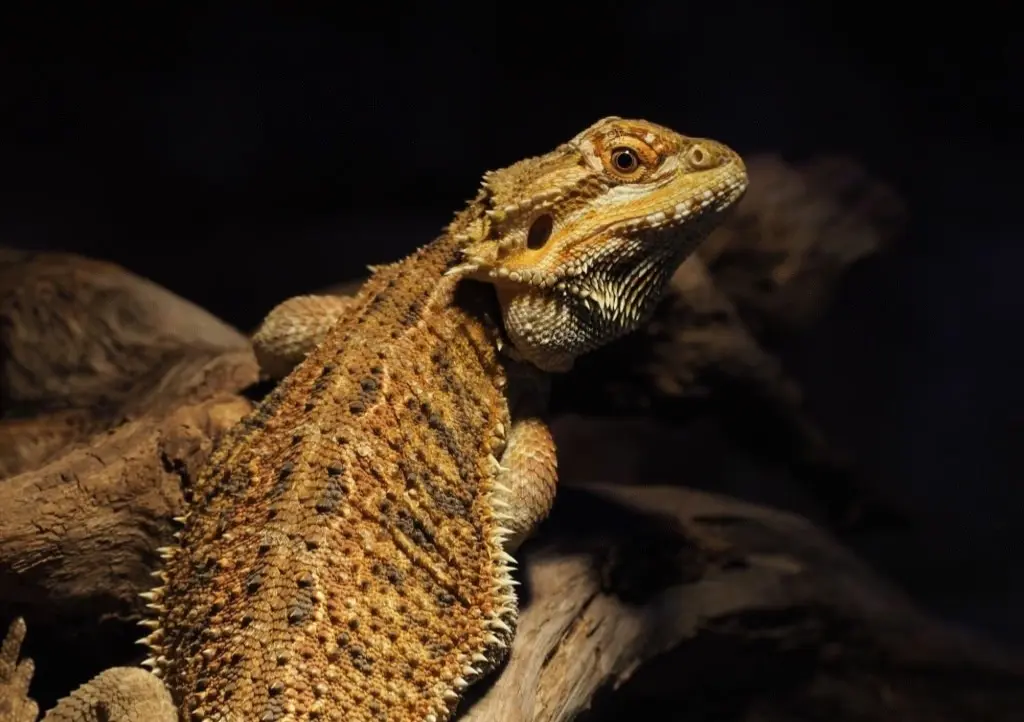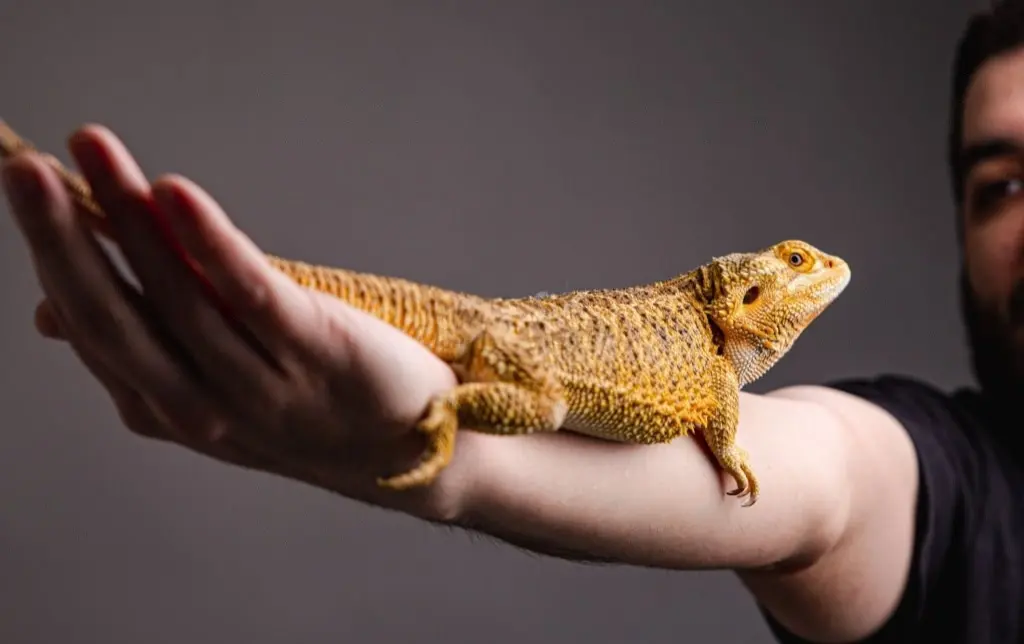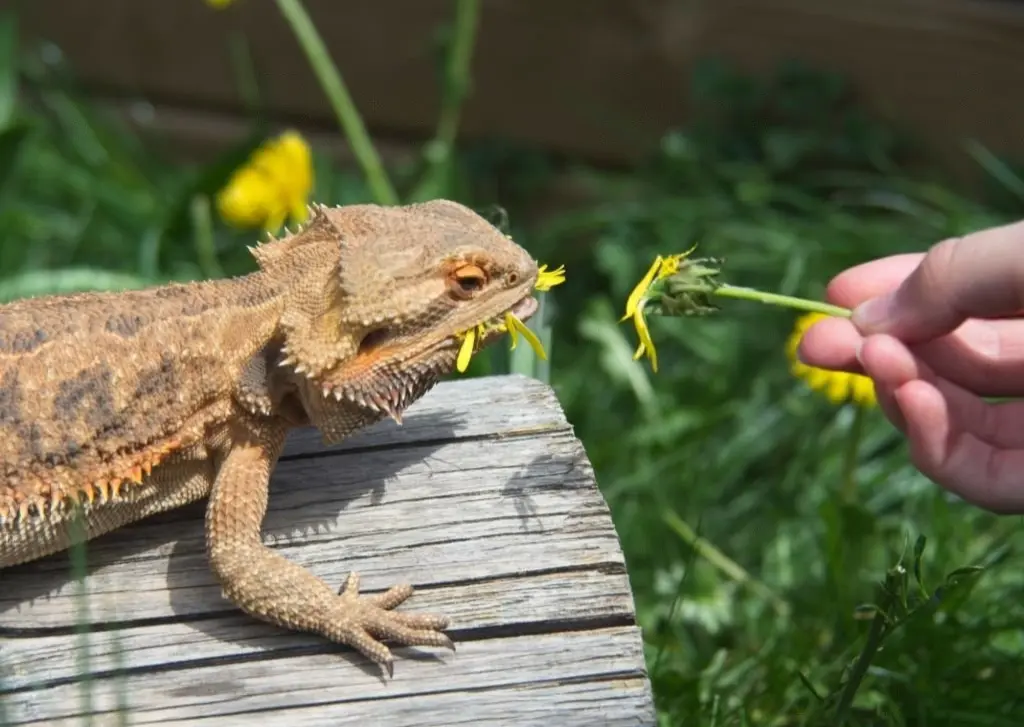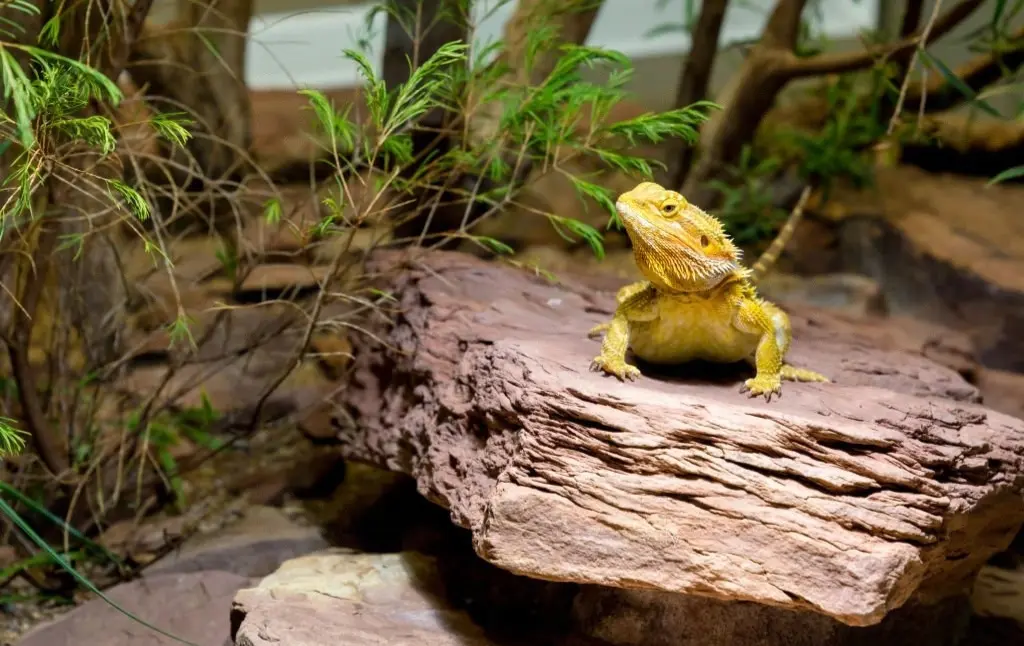Have you ever wondered if your beloved bearded dragon can recognize faces?
Well, it turns out that these scaly companions may have more intelligence than we think!
Recent studies suggest that bearded dragons are capable of recognizing and even remembering familiar human faces. So how exactly do they do this?
Researchers from the University of Lincoln in England recently conducted an experiment to see if bearded dragons could identify and remember familiar human faces.
They found lizards make distinct behavioral changes when presented with a familiar face compared to a strange one! This suggests that Bearded dragons can use visual cues like facial recognition for social purposes.
Behavioral Traits Of Bearded Dragons
Bearded dragons like routine and familiarity in their environment.
If you move furniture or other items around in your home, they may become confused or stressed by the change.
This means that bearded dragons can recognize objects or individual facial features over time and associate them with particular individuals in their lives!
Facial Recognition In Reptiles

As we have seen, bearded dragons are very intelligent creatures with an impressive array of behavioral traits. But do these clever reptiles possess the ability to recognize faces?
After years of painstaking research, experts can finally say for certain: yes, bearded dragons can recognize faces!
The process by which this recognition takes place is actually quite fascinating.
Bearded dragons use their superior eyesight to take in subtle details such as facial structure, color and even expressions. This allows them to differentiate between familiar people or animals they’ve encountered before and strangers they haven’t met yet.
In some cases, it’s possible that bearded dragons may even be able to “read” emotions on others’ faces and express empathy accordingly.
Scientific Studies On Facial Recognition In Reptiles
In one study conducted by researchers from the University of Lincoln in England, they tested seven lizards to see if they could discriminate between two different human faces or not. They found that five out of the seven lizards were able to accurately distinguish between both human faces.
This suggests that these reptiles are capable of recognizing individual faces and may even remember them over long periods of time.
These findings show that while we don’t know for certain whether or not bearded dragons can recognize individual faces, it is entirely possible based on what we know about other reptile species’ capabilities in this area.
More research needs to be done before we can definitively say yes or no.
Can Bearded Dragons Memorize Faces?
The previous section discussed scientific studies conducted to determine if reptiles, such as bearded dragons, can recognize faces.
Now the question arises: Can they actually memorize faces?
Well, it appears that yes, they do have the capability of memorizing and recognizing individual faces.
Studies suggest that in order for a reptile to be able to properly identify a face, there must first be an interaction between the animal and the person whose face is being recognized.
This means that if you frequently interact with your bearded dragon on a regular basis, they will likely begin to associate your face with familiarity over time.
Bearded dragons are capable of remembering faces and even preferring some over others based on past interactions – so don’t forget to give your little scaly friend lots of attention!
Physiological Limitations For Facial Recognition
It is likely that bearded dragons may not be able to recognize faces, as their physiological structure does not lend itself well to facial recognition.
Their eyes are adapted for excellent vision in the wild but they lack an area of the brain dedicated solely to processing and recognizing faces.
This means that instead of relying on memory or pattern-matching, they must rely more heavily on other cues such as coloration or body language.
Additionally, their field of view is limited compared to humans; this could make it difficult for them to pick out a face in a crowd or even among multiple animals.
Furthermore, bearded dragons have poor depth perception which can also hamper their ability to distinguish between two similar-looking creatures and tell them apart from one another.
All these factors mean that facial recognition might be too complex of a task for these ancient reptiles.
Training Techniques To Facilitate Facial Recognition

It is possible that bearded dragons may be able to recognize faces with some level of success, given proper training and reinforcement.
To achieve this feat, it would require consistent exposure and repetition in order for the animal to learn how to identify different people or animals.
As part of the study, researchers have attempted to strategically pair the face of an individual with a reward such as food in a manner. As a result, reptiles became able to recognize this person when they see him again because the image of his face is associated with food.
Also, using props like hats or glasses could be used during training sessions so that your beardie becomes more familiar with these distinguishing characteristics.
With enough time and patience, bearded dragons may become adept at recognizing familiar faces!
Role Of Visual Cues In Facial Identification
Studies suggest that visual cues are important for facial identification among lizards, including bearded dragons.
Bearded dragons rely on features such as pattern recognition, which includes color and contrast, along with the shape and size of eyes, nose, mouth, etc., to identify individuals.
some research suggests that scent might play a role in identifying someone by their face as well; although this hasn’t been studied extensively yet.
Bearded dragons also use spatial memory; an ability to remember where a particular individual was last encountered or interacted with.
Role Of Olfactory Cues In Facial Identification
Moving on from the role of visual cues in facial identification, let’s talk about olfactory cues.
Olfaction – or smell – is a powerful sense that can be used to identify faces. Bearded dragons are able to pick up on chemical signals or smell with their keen noses and vomeronasal organs.
In addition, they are also equipped with a Jacobson’s organ which further amplifies these smells, allowing them to detect very small changes in odorants around them.
With all of these adaptations combined, it is no surprise that many researchers believe bearded dragons have an impressive ability to recognize different scents associated with individuals!
Bearded dragons can remember certain scent combinations associated with specific people or animals after multiple encounters over time to distinguish one individual from another and decide if the person or animal should be approached or avoided.
Here is a list of five ways olfactory cues help bearded dragons recognize faces:
- Bearded dragons rely on their sensitive noses and special organs (e.g., Jacobson’s organ) to pick up subtle odors associated with individuals
- The combination of chemicals present helps them differentiate one face from another
- Over time, repeated exposure allows them to remember particular scent combinations
- This enables them to form relationships and trust based on familiarity
- By using their keen senses of smell, bearded dragons can make informed decisions regarding who/what they approach/avoid
Role Of Memory And Learning In Facial Recognition
I’m sure we’ve all experienced the feeling of recognition when looking at a familiar face.
But can bearded dragons recognize faces?
Well, It seems that memory plays an important role in helping them identify people’s faces.
Studies have shown that even after months apart, bearded dragons are able to remember who their owners are and greet them accordingly.
It also appears that learning is involved in this process; they learn to associate certain characteristics with a person’s identity over time. These could include how someone looks or how they smell.
So, it looks like our scaly friends may not be so different from us after all!
Differentiating Between People With Similar Features
I’ve been wondering if bearded dragons are capable of distinguishing people.
It seems like this is an area where many animals struggle: distinguishing people who look similar.
For instance, it’s easy for us humans to tell apart a family member from someone we don’t know – but what about our furry friends?
Bearded dragons seem to possess such capacity as well; by paying attention to details such as smell, body language and facial expressions, these reptiles can eventually learn who is whom in their environment.
Although, it might not come naturally at first sight, with enough practice and training bearded dragons could definitely tell you apart from your siblings or even complete strangers!
Factors Affecting Bearded Dragon’s Ability To Identify Faces
The ability of a bearded dragon to recognize faces depends on several factors including the age and size of the reptile.
Younger dragons may not be able to identify facial features as well as older ones, since they are still learning how to process visual information.
The environment can also affect bearded dragons’ recognition skills; if they do not get enough natural sunlight or spend too much time in an artificial light source, their eyesight could suffer.
The unique temperament of each dragon determines whether or not it can recognize its owner’s face. Some dragons may be more skittish than others and perceive sudden movements as threatening.
Tips For Helping Your Bearded Dragon Recognize You
As we’ve seen, there are several factors that can impact a bearded dragon’s ability to recognize faces.
Fortunately, you can teach your beardie to identify you as their trusted companion with some creative strategies and patience!
Let’s take a look at how:
| Activity | Effect on Beardie Recognition |
|---|---|
| Talking | Stimulates recognition by auditory cues |
| Hand-feeding treats or crickets | Positive reinforcement of trusting behaviors toward humans |
| Playing music softly in the background or tapping rhythmically near them | Promotes positive associations with specific sounds |
Using gentle words when feeding your beardie their favorite treats or insects (like mealworms & roaches) will help develop trust.
You can play soft music or tap out rhythms close by to your beardie, they’ll associate certain sounds with safety & security over time.
So, if you’re looking for ways to level up your relationship with your beloved reptilian pal then give these tips a spin!
You may just find it easier than expected for both of you. Who knows what kind of adventures await ahead… …with your new friendship!
Potential Benefits Of Teaching Your Bearded Dragon To Identify Faces

Teaching your beloved pet the ability to identify different people can potentially provide a number of benefits.
Here are just some of those potential rewards:
- Improved Bonding: When your beardie recognizes and acknowledges you when you enter the room or come close to its enclosure, this strengthens the connection between you two as loving companions.
- Enhanced Interaction: If they become comfortable enough with their new skill, then you may even be able to introduce them to other family members or friends in order for them to enjoy better socialization opportunities.
- Heightened Care & Attention: Knowing who is caring for him on any given day will help your dragon understand that he is safe and secure and thus feel more confident about exploring his surroundings without fear.
By recognizing familiar faces, a bearded dragon can have greater opportunities for enrichment and an improved quality of life. With time, patience, and practice – plus plenty of treats – it’s entirely feasible for your furry friend to gain this valuable skill set!
Conclusion
The idea that reptiles like bearded dragons can recognize faces is fascinating. It’s almost as if they have the capability of forming a bond with us, similar to what we experience with dogs and cats.
Like many things in life, their ability to do so relies heavily on individual factors such as diet, environment, emotional connection, and training. The more effort you put in over time, the greater reward you get later on!
Overall, there is still much research needed around facial recognition in bearded dragons but from my own personal experiences, I am confident that these lovable creatures can develop meaningful relationships with us humans through facial recognition.
